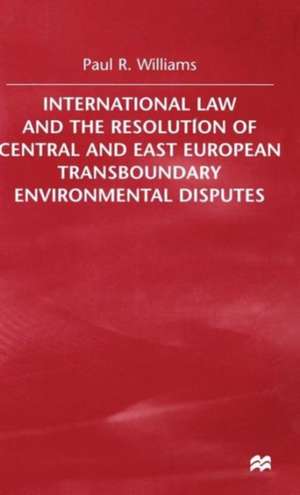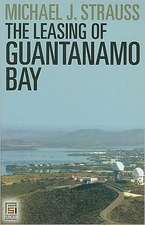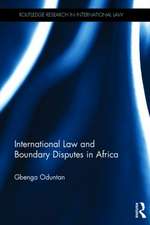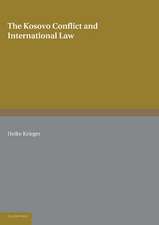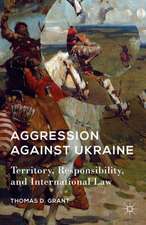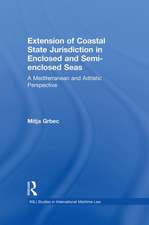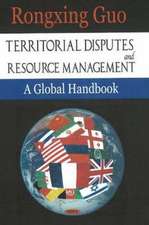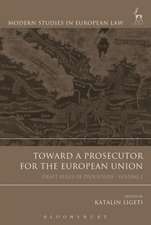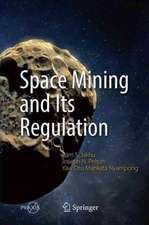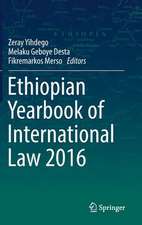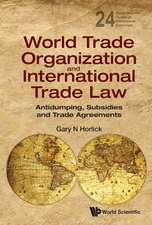International Law and the Resolution of Central and East European
Autor P. Williamsen Limba Engleză Hardback – 19 iul 2000
Preț: 647.73 lei
Preț vechi: 762.04 lei
-15% Nou
Puncte Express: 972
Preț estimativ în valută:
123.96€ • 128.94$ • 102.34£
123.96€ • 128.94$ • 102.34£
Carte tipărită la comandă
Livrare economică 14-28 aprilie
Preluare comenzi: 021 569.72.76
Specificații
ISBN-13: 9780333764954
ISBN-10: 0333764951
Pagini: 376
Ilustrații: XXIII, 345 p.
Dimensiuni: 140 x 216 x 28 mm
Greutate: 0.62 kg
Ediția:2000
Editura: Palgrave Macmillan UK
Colecția Palgrave Macmillan
Locul publicării:London, United Kingdom
ISBN-10: 0333764951
Pagini: 376
Ilustrații: XXIII, 345 p.
Dimensiuni: 140 x 216 x 28 mm
Greutate: 0.62 kg
Ediția:2000
Editura: Palgrave Macmillan UK
Colecția Palgrave Macmillan
Locul publicării:London, United Kingdom
Cuprins
Acknowledgements Table of Cases Table of Major Treaties and International Instruments List of Abbreviations Introduction PART I: CENTRAL AND EAST EUROPEAN TRANSBOUNDARY ENVIRONMENTAL DISPUTES FROM THE BALTIC SEA TO THE BLACK SEA The Northern Tier: Polluting the Baltic Sea, Dark Clouds Over the Baltic Triangle and Silesian Coals Basin, and East Meets West in Temelín The Southern Tier: Cleaning Up After the Soviets, Dumping in the Danube, Dueling Nuclear Power Plants, and Suffocating the Black Sea PART II: USING INTERNATIONAL LAW TO RESOLVE THE SLOVAK-HUNGARIAN DISPUTE CONCERNING THE CONSTRUCTION AND OPERATION OF THE GABCIKOVO-NAGYMAROS PROJECT The Dispute Formation Phase: Soviet Inspired Designs to Harness the Power of the Danube and Post-transformation Second Thoughts The Pre-resolution Phase: Enter Sub-state Actors, Third Parties and International Law The Resolution Phase: Making the Case to the International Court of Justice The Implementation Phase: Back to the Negotiating Table, and Maybe Back to the Court PART III: UNDERSTANDING THE ROLE OF INTERNATIONAL LAW The Regime of International Law: Its Nature and Function Influencing the Utilization of International Law: Non-state Actors, Situational Circumstances, and Factors of Functionality PART IV: PROSPECTS FOR AN INCREASING ROLE FOR INTERNATIONAL LAW IN PROMOTING CENTRAL AND EAST EUROPEAN TRANSBOUNDARY ENVIRONMENTAL DISPUTE RESOLUTION Gauging the Operability of International Law: the Evolving Circumstances Predicting the Future: an Increasing Role for International Law? Conclusions Index
Notă biografică
PAUL R. WILLIAMS teaches public international law and directs the JD/MA Joint Degree program at American University's School of International Service and Washington College of Law. Dr Williams holds a Ph.D. from the University of Cambridge, a J.D. from Stanford Law School and a B.A. from the University of California at Davis. Dr Williams is widely published on issues of international environmental law, the role of law in dispute resolution, state succession, war crimes and human rights. Dr Williams also regularly appears on CNN, BBC, CBC and is frequently interviewed by the New York Times, Washington Post, Christian Science Monitor, and U.S. News and World Report on matters of public international law.
